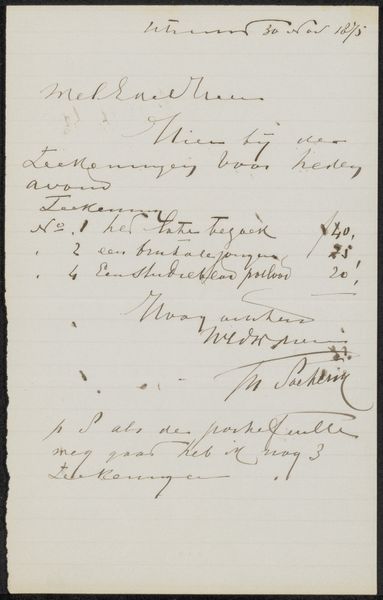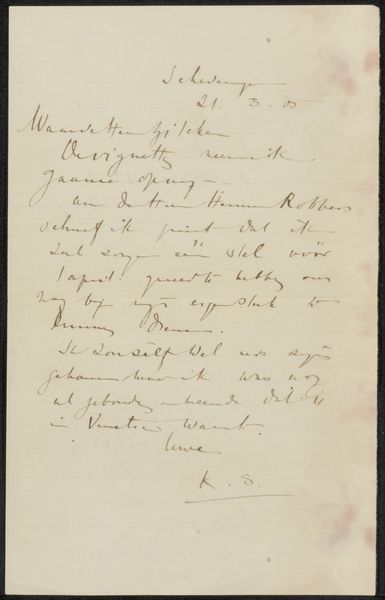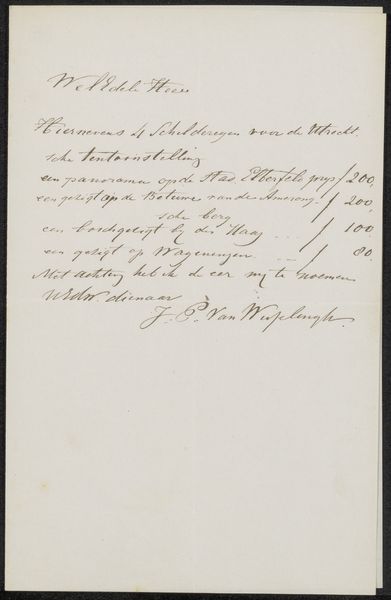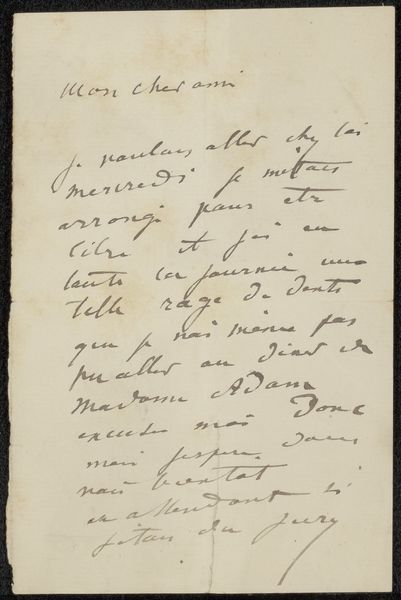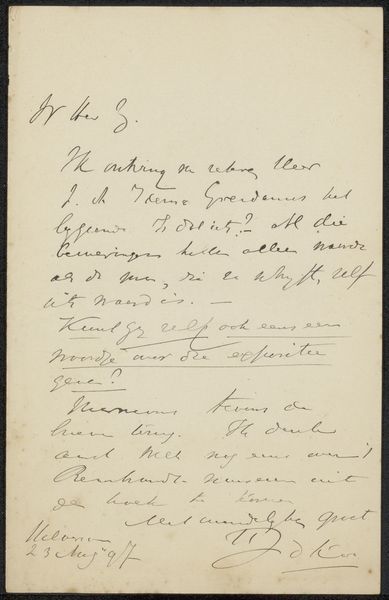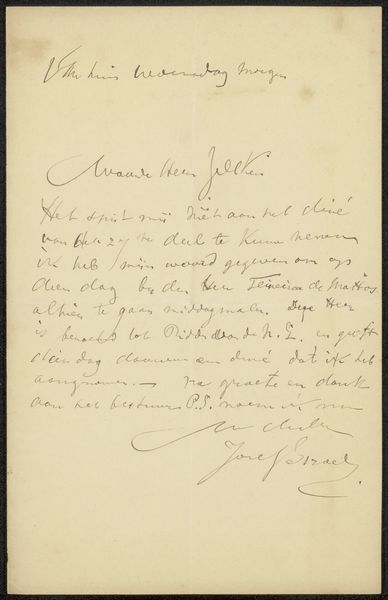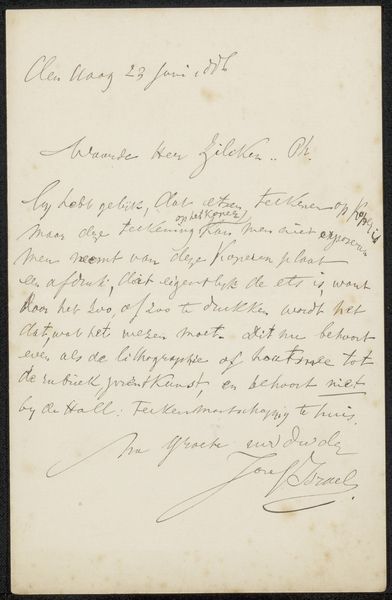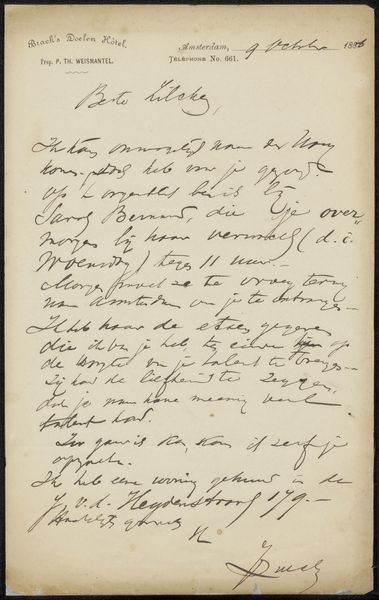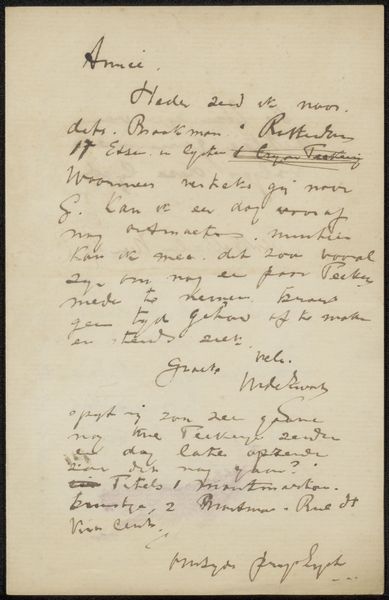
drawing, paper, ink
#
drawing
#
aged paper
#
hand-lettering
#
ink paper printed
#
hand drawn type
#
paper
#
personal sketchbook
#
ink
#
hand-drawn typeface
#
ink drawing experimentation
#
ink colored
#
sketchbook drawing
#
sketchbook art
#
calligraphy
Copyright: Rijks Museum: Open Domain
Editor: Here we have "Briefkaart aan Philip Zilcken" by Karel Sluijterman, likely from sometime between 1904 and 1925. It's ink on paper, a postcard filled with looping script. There's something immediate and personal about the handwritten note that feels quite different than printed correspondence. What strikes you most about it? Curator: What grabs me is its raw materiality. The ink bleeding into the paper, the distinct impression left by the nib. It’s more than just conveying information; it’s a record of physical labor and interaction. The choice of materials – why ink rather than pencil? Was the paper readily available or carefully selected? It points to a whole social context. Editor: So, you see value in looking beyond just the message and considering the physical components? Curator: Precisely. We can even analyze the standardization, or lack thereof, in postcard production at the time. Was this pre-printed with the 'Bibliotheek' heading, or individually commissioned? Even the script – the hand-lettering itself – can be viewed as a kind of industrial art. It speaks to the writer's education, their access to materials, their participation in a specific network of exchange. Editor: That's a different way of viewing it. I usually think of the aesthetic or emotional intent, but you are focusing on its existence as an object made through particular social conditions. Curator: Exactly. And even that aged quality of the paper… how has time altered its materiality? The yellowing, any foxing… these are all markers of its journey through the world, its exposure to certain environmental factors. It all tells a story of consumption and preservation. Editor: This perspective adds so much richness to my understanding. Thank you. Curator: My pleasure. It shows how even the most seemingly simple objects contain multitudes.
Comments
No comments
Be the first to comment and join the conversation on the ultimate creative platform.
